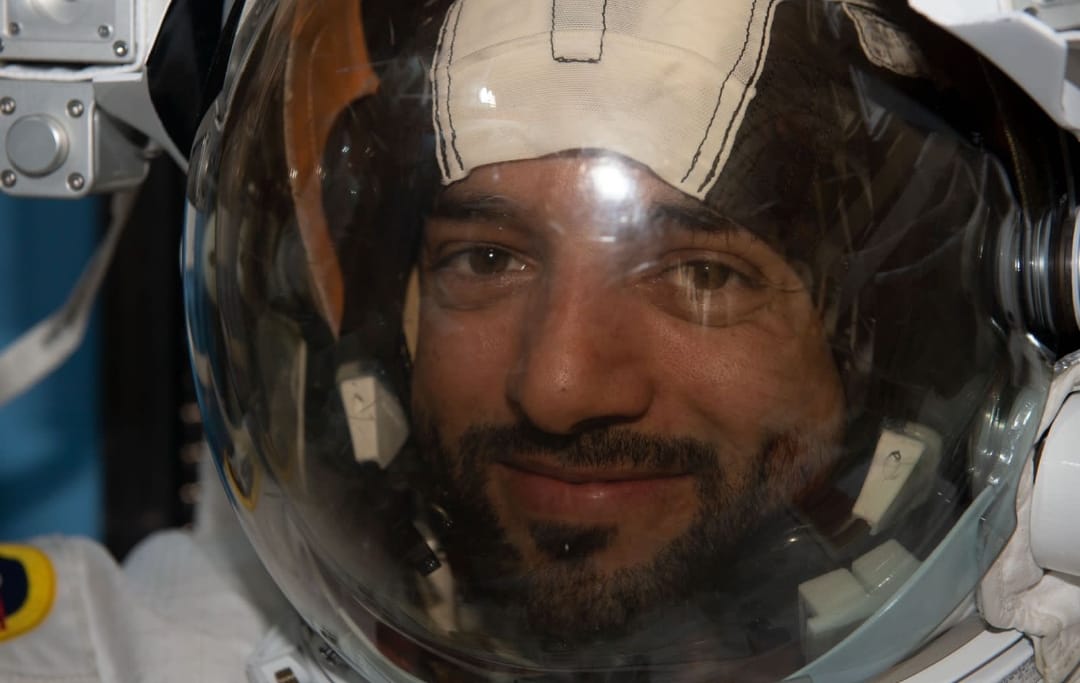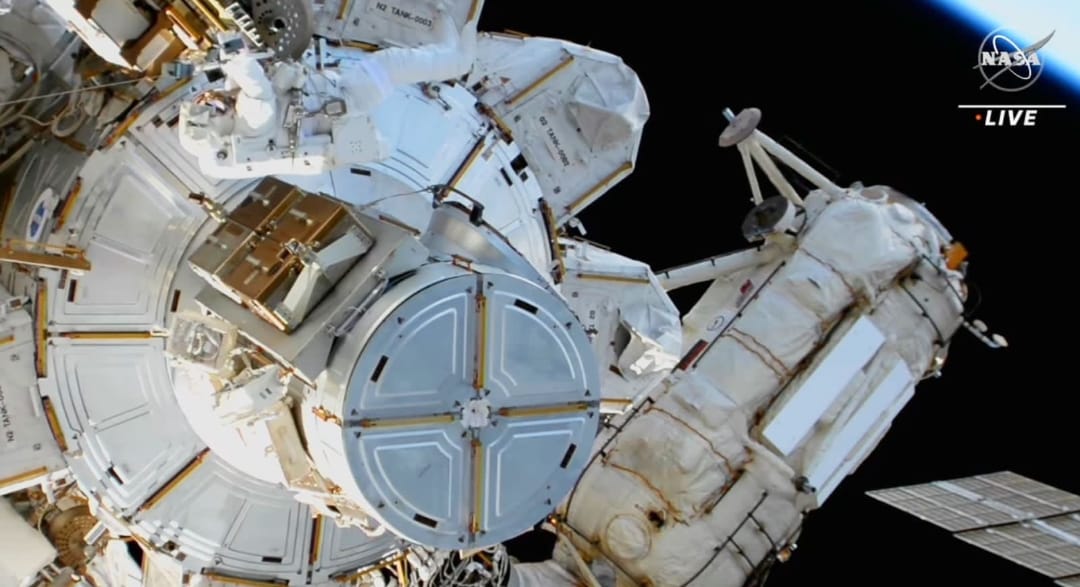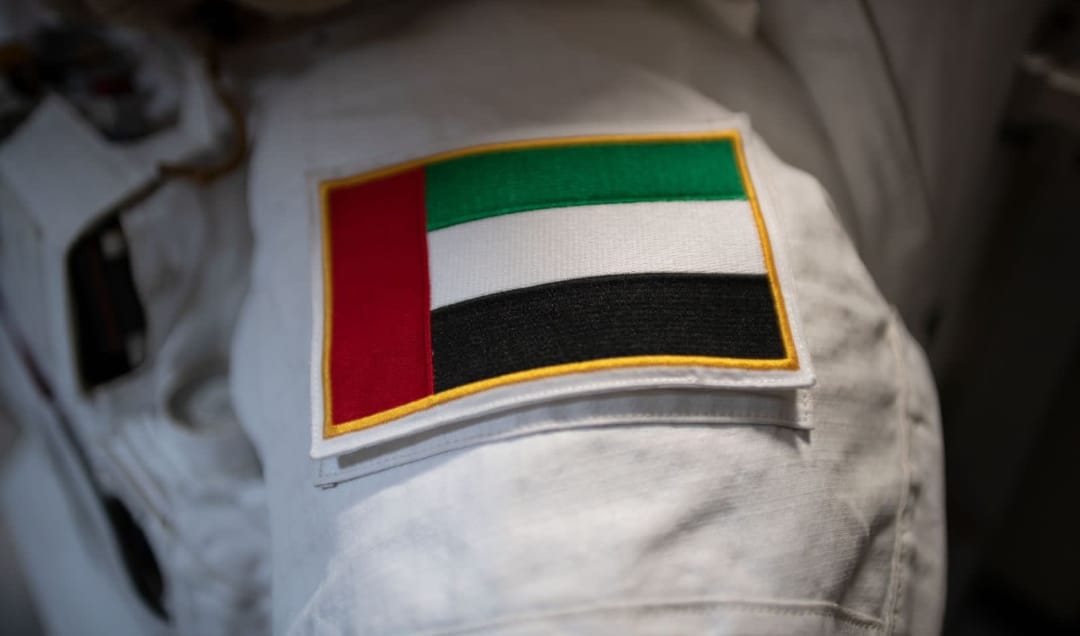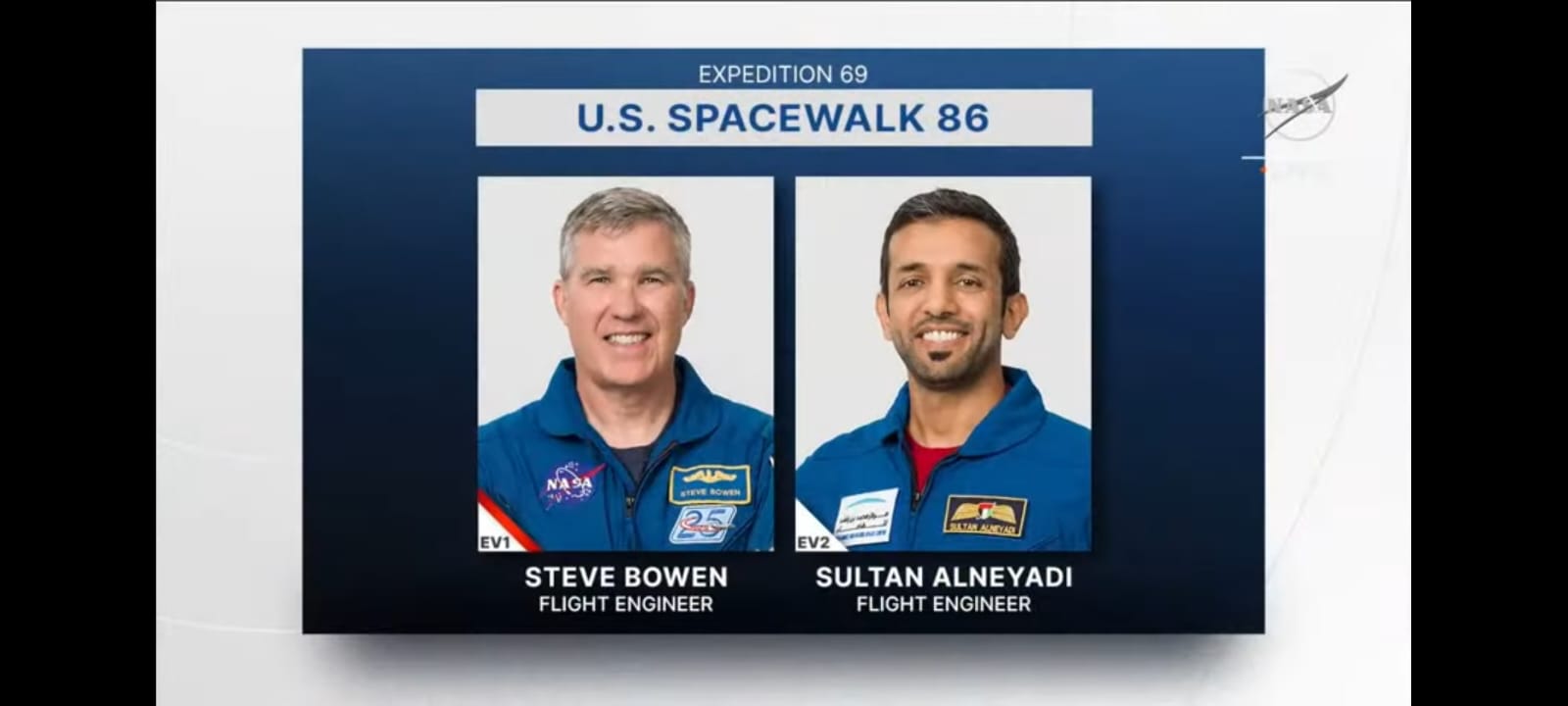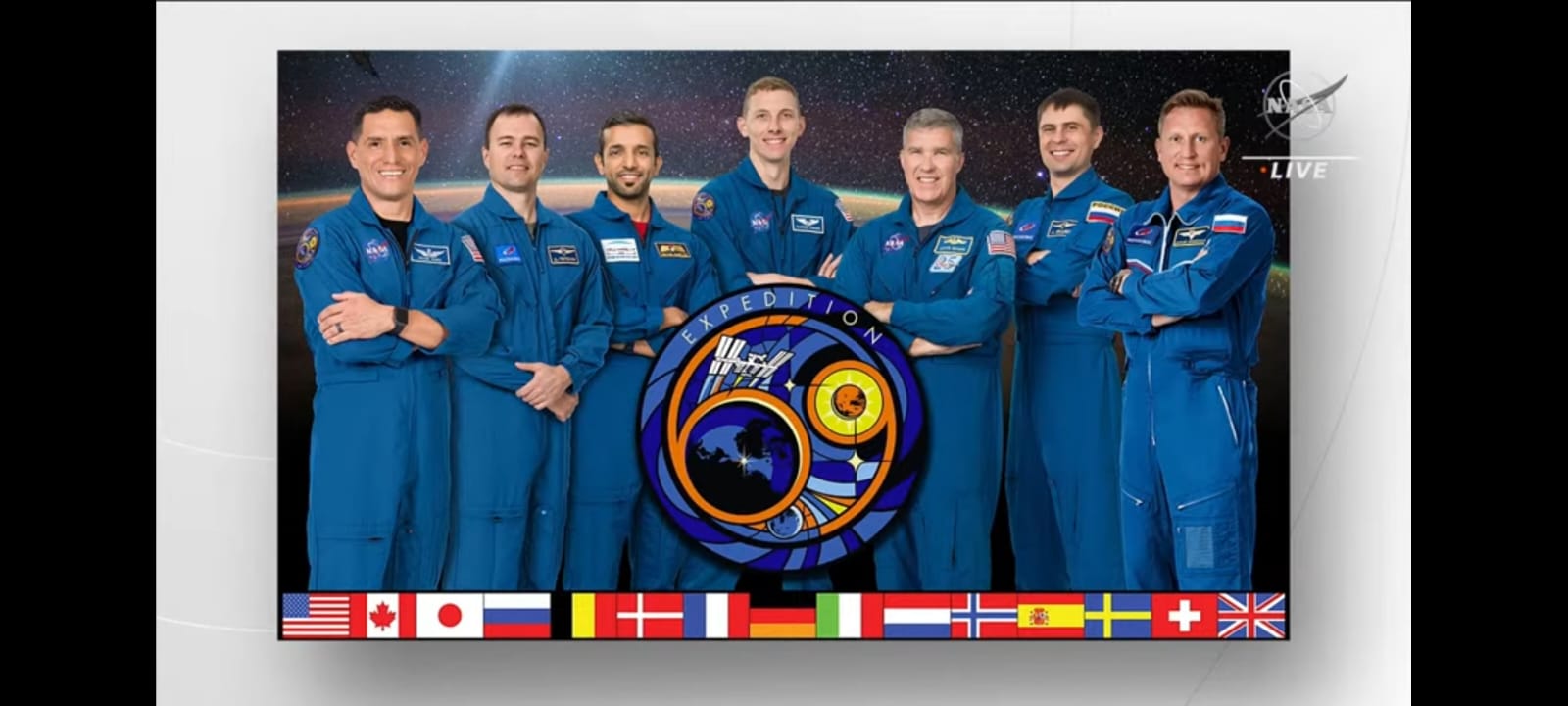UAE astronaut Sultan Al Neyadi has made history by becoming the first Arab to complete a spacewalk. Al Neyadi did his spacewalk outside the International Space Station (ISS) last evening, after spending several weeks on board the ISS.
After the landmark spacewalk, His Highness Sheikh Mohammed bin Rashid Al Maktoum, Vice-President and Prime Minister of the UAE and Ruler of Dubai, tweeted (in Arabic): “After 3 years of intensive training, today we saw Sultan Al Neyadi on the first mission to walk in outer space, carrying out missions to instal new parts and carry out maintenance on the International Space Station, the first Emirati, the first Arab, the first Muslim, to walk in outer space… proud of that.”
Sheikh Mohammed added: “They say that two-thirds of the stars in the sky bear Arabic names. Arabs are capable, Arabs are coming, Arabs are creative, if we decide to focus on science….”
Al Neyadi, nicknamed ‘Sultan of Space’, was chosen along with Hazzaa Al Mansoori by the UAE Astronaut Programme run by the Mohammed bin Rashid Space Centre; they both underwent extensive training at NASA. While Al Mansoori became the first Emirati to go into space, and spent eight days on the ISS in September 2019, Al Neyadi made his journey to the ISS in early March 2023, and has a six-month mission at the space station.
The Emirati astronaut took the UAE flag out into space during his EVA (extra-vehicular activity), wearing it on his sleeve.
He worked with Steve Bowen, a very experienced astronaut from the National Aeronautics and Space Administration (NASA), United States, on the EVA labelled ‘Expedition 69: US Spacewalk 86’. The ISS crew now has seven astronauts: three Americans from NASA; three Russians from Roscosmos; and one Emirati (also from NASA).
According to the ‘NASA Live’ YouTube channel, which live-streamed the spacewalk of Bowen and Al Neyadi, the two-person assembly-and-maintenance excursion would last about six-and-a-half hours. Their planned tasks were: preparations for ISS rollout solar array installations for future spacewalks; and retrieval of S-band antenna equipment for refurbishment.

